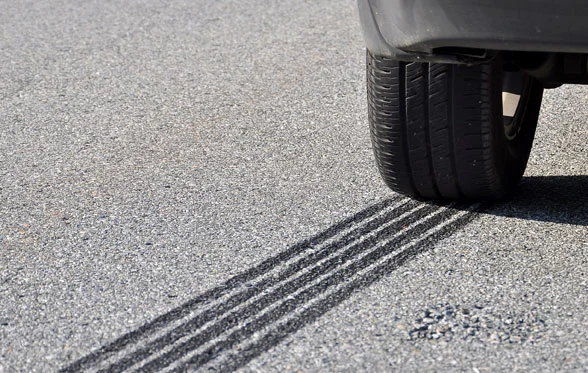United Nations Economic Commission for Europe (UN ECE) Regulation No. 152.00 on advanced emergency braking systems (AEBS) for M1 and N1 category vehicles (i.e. passenger cars, multipurpose passenger vehicles, pick-up trucks and vans) was originally developed by a specific Informal Working Group of the Working Party on Automated/Autonomous and Connected Vehicles (GRVA) between 2017 and 2019. The original version of this Regulation, which was published in February 2020, included requirements for AEBS systems that could detect and react to stationary vehicles, moving vehicles (travelling in the same direction, but at a lower speed) and pedestrians. However, the requirements covering moving vehicle scenarios did not cover situations where there was a high relative speed differential between the test vehicle and the "target"vehicle.
Once drafting of the original version of ECE 152.00 was completed, the Informal Working Group on Advanced Emergency Braking Systems for M1 and N1 category vehicles continued with their work to further develop and refine the legal requirements on AEBS systems. The latest output of this work was officially published on November 4, 2020 in the form of a Supplement 1 to ECE 152.00 and an 01 Series of Amendments to ECE 152.
The changes introduced by Supplement 1 to ECE 152.00 include the following:
- Corrections and clarifications to the text of the Regulation to more accurately define the requirements.
- Replacement of the terms "unladen"and "laden"with "mass in running order"and "maximum mass".
- The introduction of performance requirements for moving vehicle scenarios where there is a higher relative speed differential between the vehicles.
- The introduction of the possibility to obtain type approval for AEBS systems that only detect and react to other vehicles, AEBS systems that only detect and react to pedestrians or AEBS systems that detect and react to both other vehicles and pedestrians.
The date of entry into force for Supplement 1 to ECE 152.00 was September 25, 2020. However, it should be noted that compliance with ECE 152.00, including Supplement 1, will only become mandatory once a Contracting Party requires such compliance in their National / Regional legislation.
The changes introduced by the 01 Series of Amendments to ECE 152 can be summarised as follows:
- More stringent performance requirements for the vehicle to pedestrian scenario are introduced. Whereas the original version of the Regulation required vehicles to be capable of preventing a pedestrian impact from an initial speed of 30 km/h, the 01 Series of Amendments requires vehicles to be capable of preventing a pedestrian impact from an initial vehicle speed of 42 km/h.
- The allowance for N1 category vehicles meeting specified dimensional and mass distribution criteria to comply with less severe performance requirements is removed. All N1 category vehicles are now required to meet the same performance requirements regardless of their dimensional and mass distribution properties.
With regard to introduction dates, the transitional provisions contained in ECE 152.01 specify that, fromMay 1, 2024, Contracting Parties shall not be obliged to accept ECE 152.00 type approvals that were first issued after May 1, 2024, but must continue to accept ECE 152.00 type approvals first issued before May 1, 2024 until at least May 1, 2026.
Work on developing the necessary technical requirements and test procedures for AEBS systems which can detect and react to cyclists is continuing within the Informal Working Group on Advanced Emergency Braking Systems for M1 and N1 category vehicles and will be published at some future date.
